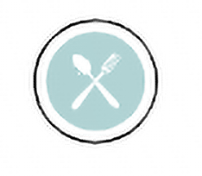If you are moving into a new home and setting up a kitchen for the first time then this article is just for you, in minutes you’ll have the perfect list of essential utensils to get started. We’ll also explanations for each item, top brands to look for, and include some storage and safety tips to wrap things up.
Building the Utensil Collection
A good starting point is a set of knives (chef’s knife, paring knife, etc.), spoons (slotted spoon, tablespoon), forks, and measuring cups/spoons. Other valuable tools include spatulas, tongs, whisks, and ladles. Depending on your cooking style and needs you may want to add other items such as peelers or zesters for more specialized tasks.
Let’s step through a complete list including what each item is used for and recommendations for quality/good value brands.
Top 20 List of Utensils for a New Kitchen
Here’s a list of 20 essential kitchen utensils and their uses:
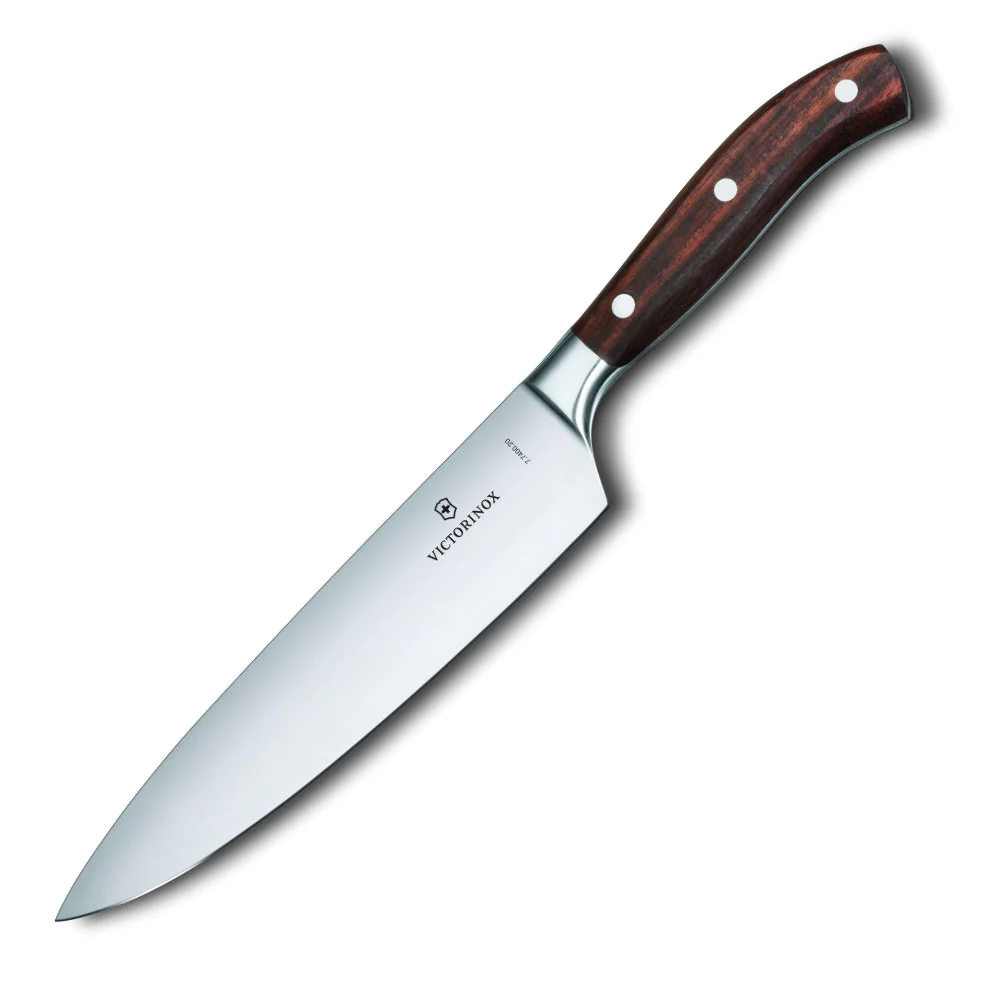
Chef’s knife – A must-have for any kitchen. Look for an 8-inch or longer blade. It’s the ultimate multi-task knife used for slicing, dicing, mincing, and chopping.
Image: Victorinox Grand Maitre Wood 8″ Chef’s Knife
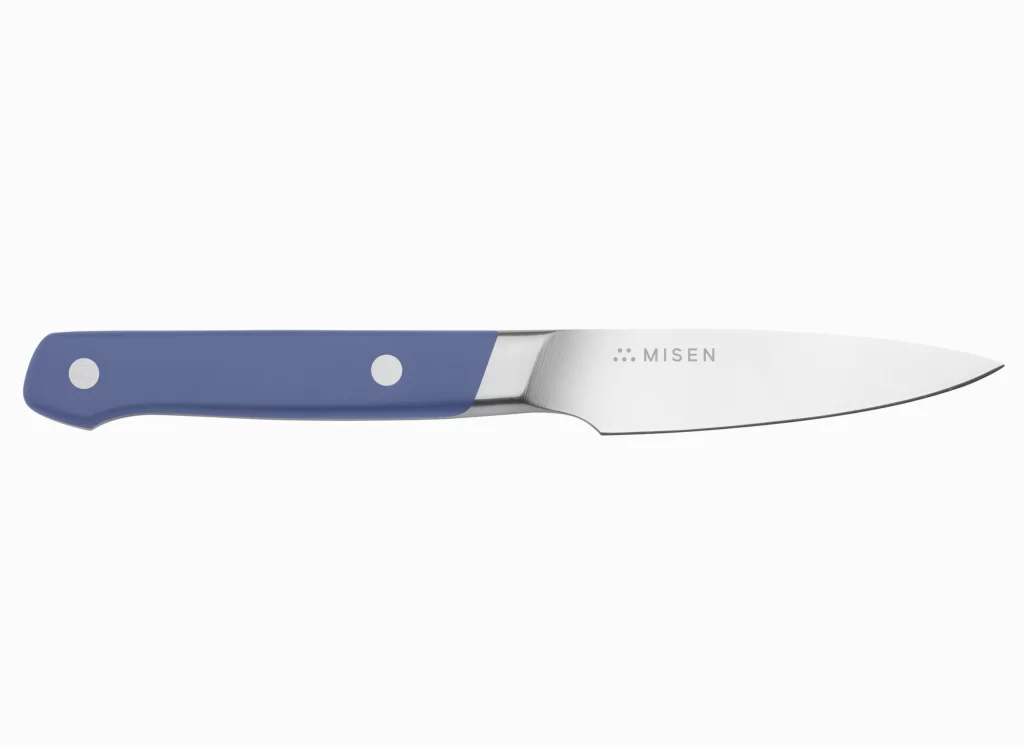
Paring knife – A 3 to 4-inch knife ideal for peeling, coring, and paring fruit and small vegetables.
Image: Misen Paring Knife
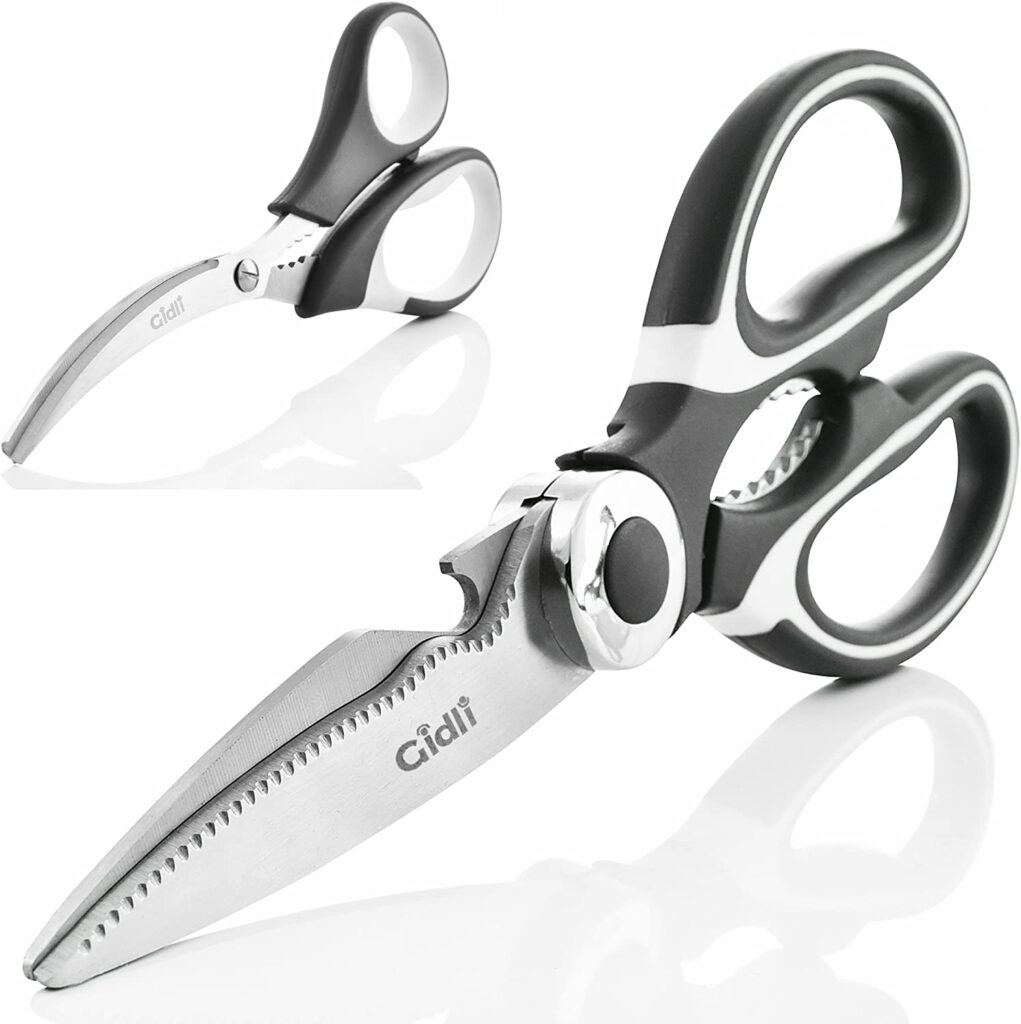
Kitchen shears – Heavy-duty scissors for cutting meat, herbs, packaging, and more. Look for kitchen-specific shears.
Image: Gidli Kitchen Shears
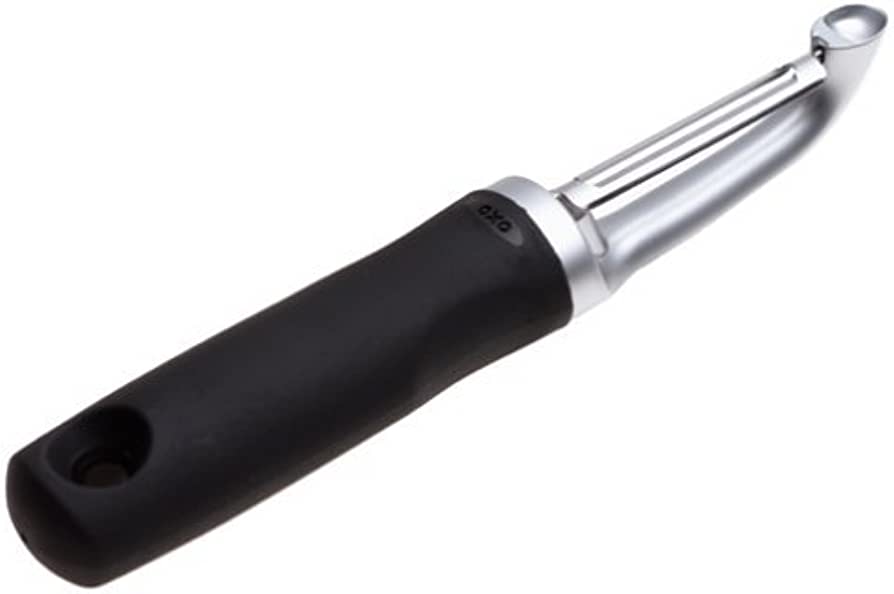
Peeler – A swivel peeler makes quick work of peeling vegetables and fruit.
Image: OXO Good Grips Pro Swivel Peeler

Cutting board – Choose a large wooden board for chopping and/or a plastic, or silicone board to protect your counters.
Image: Boos Reversible Maple Cutting Board
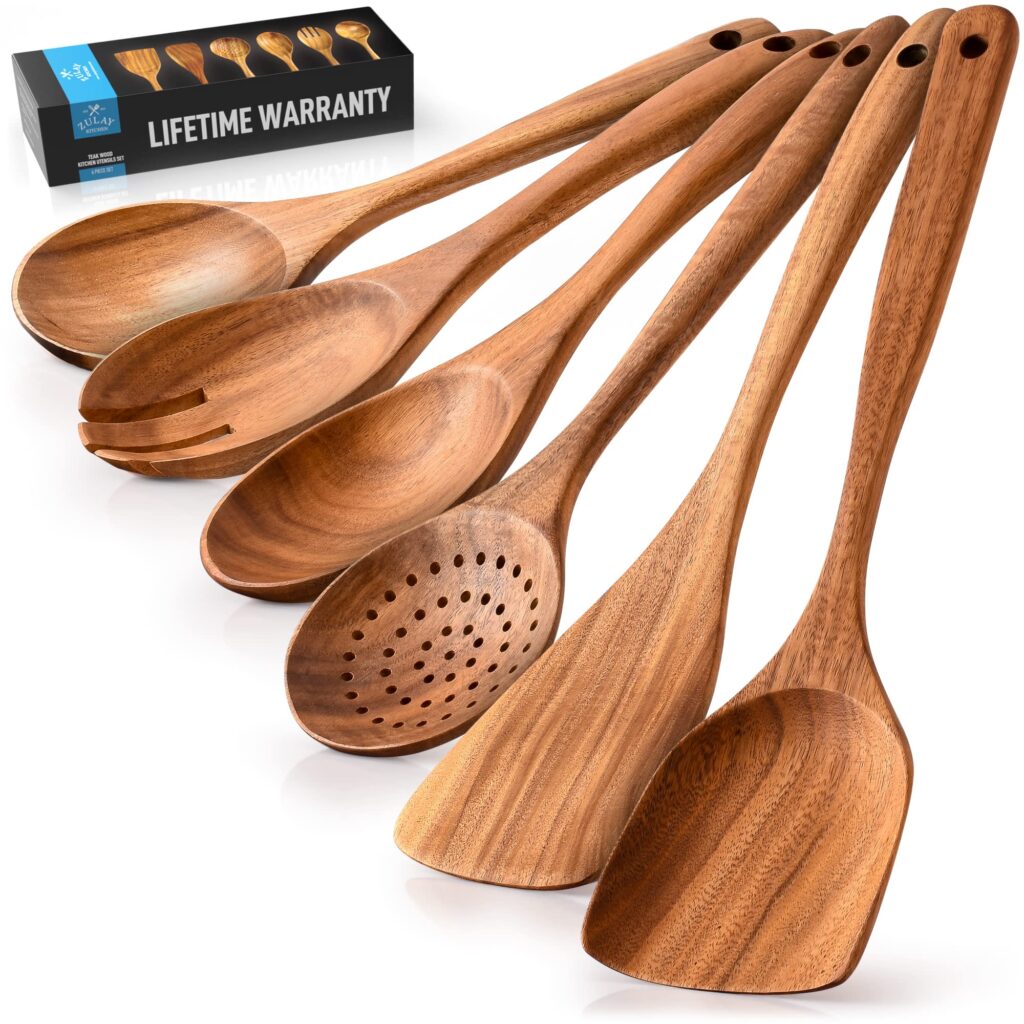
Wooden spoons – Great for stirring sauces and scooping. Best purchased in a set including different sizes/types. Wooden spoons won’t scratch cookware, have antibacterial properties, and don’t get as hot as stainless.
Image: Zulay Kitchen 6 Piece Wooden Spoons
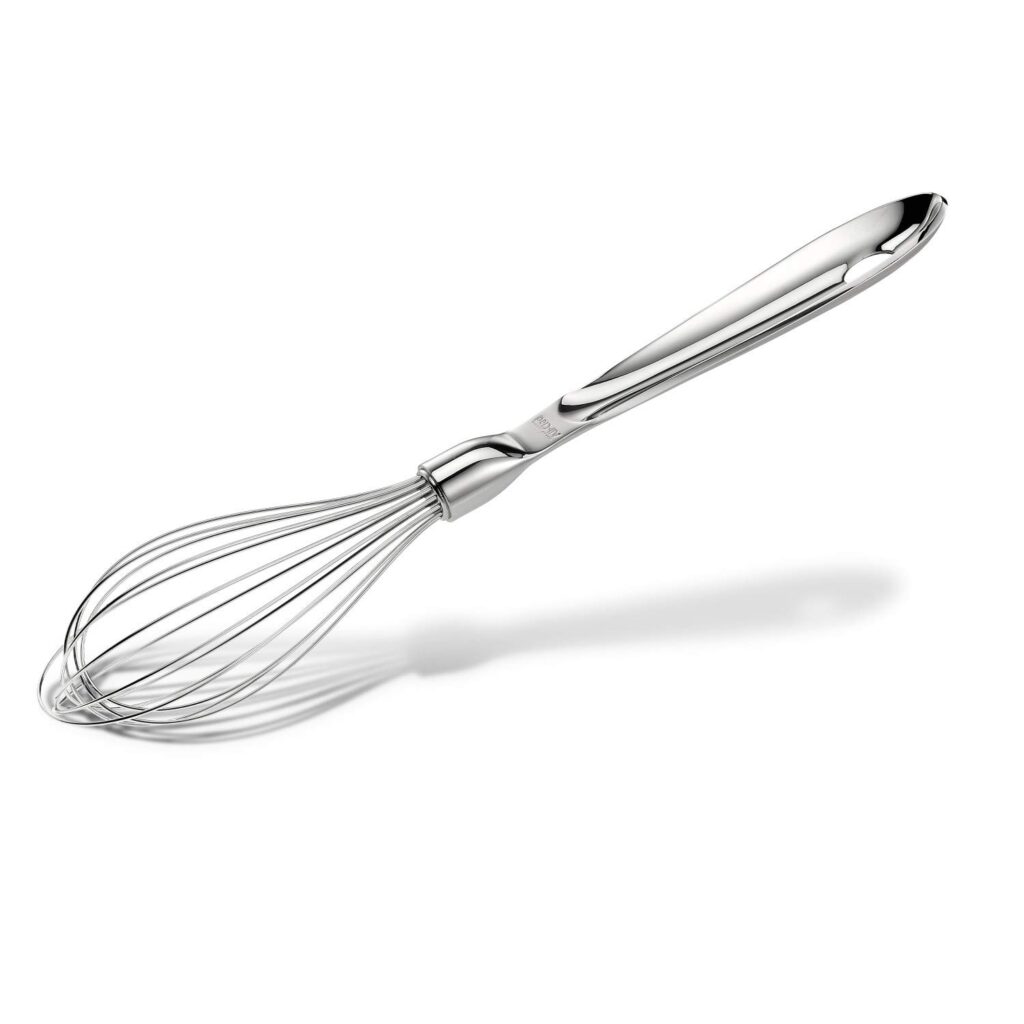
Whisk – Essential for whipping eggs or mixing batters. A stainless steel balloon whisk works well.
Image: All-Clad T135 Stainless Steel Whisk
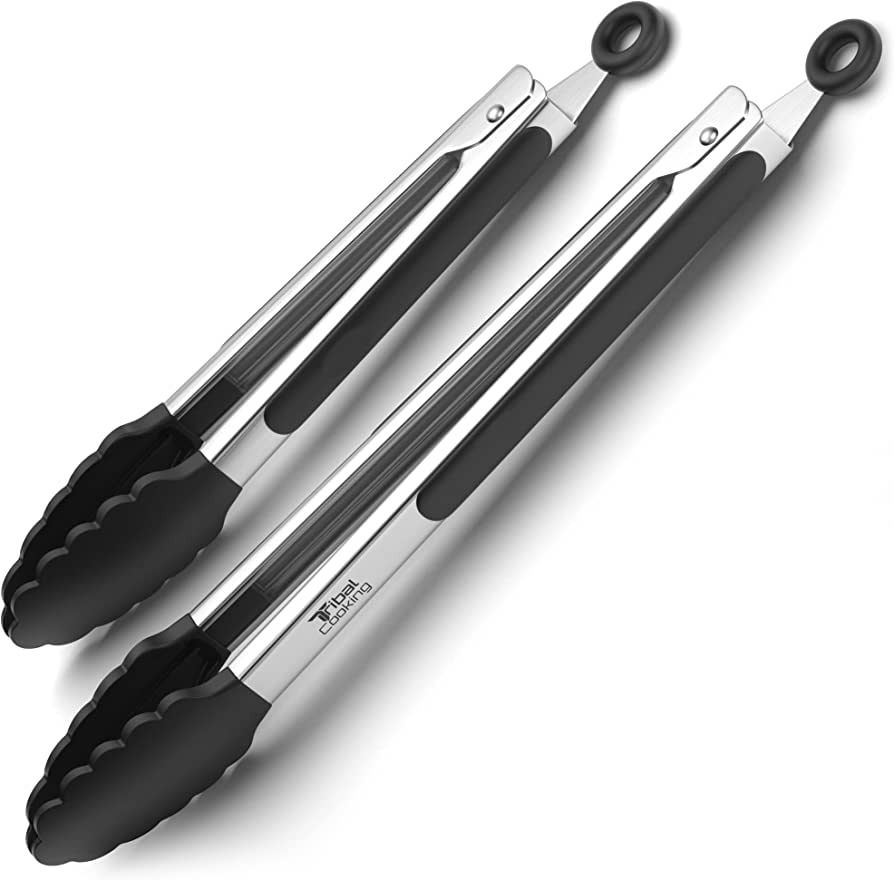
Tongs – Look for 9-inch stainless steel tongs which are useful for turning meat or grabbing ingredients.
Image: Tribal Cooking Kitchen Tongs
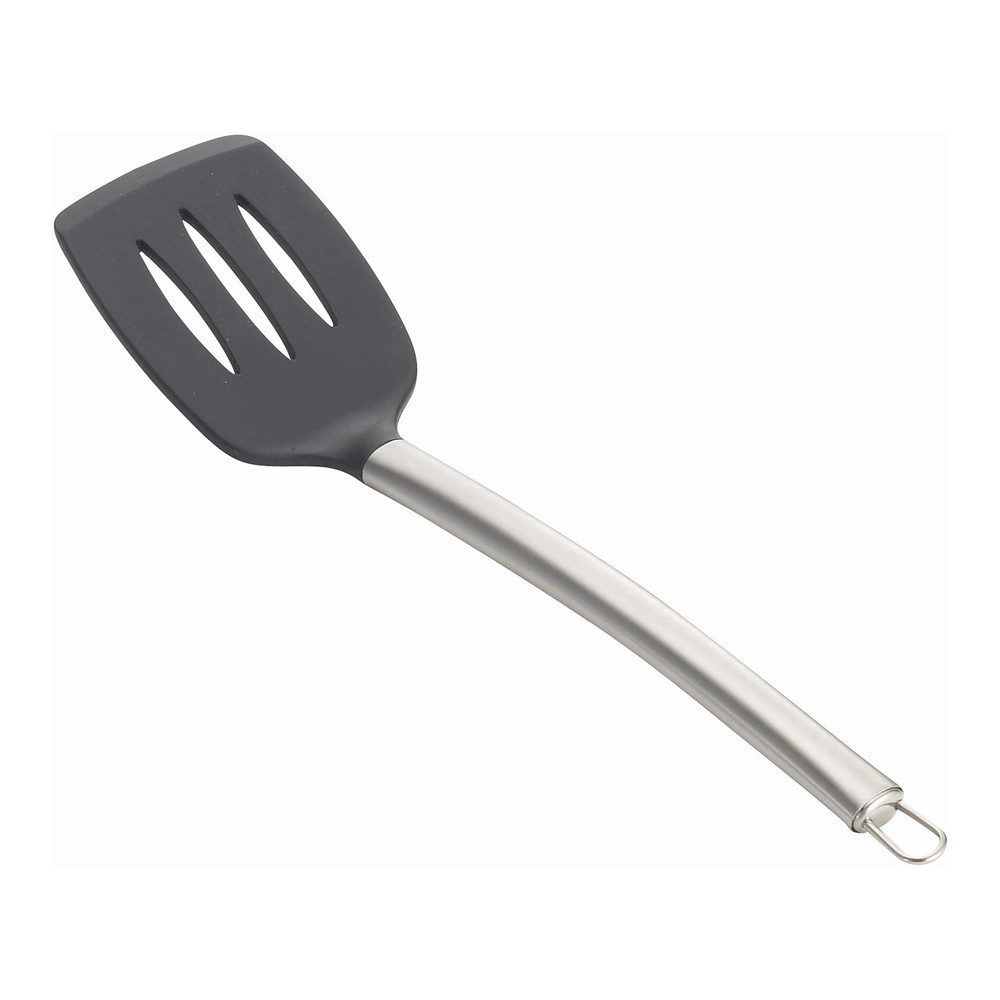
Spatula – A large rubber spatula and a metal spatula are must-haves for scraping bowls and flipping. Alternatively, consider a stainless spatula with a silicone head.
Image: Tablecraft CW402 Silicone Slotted Spatula
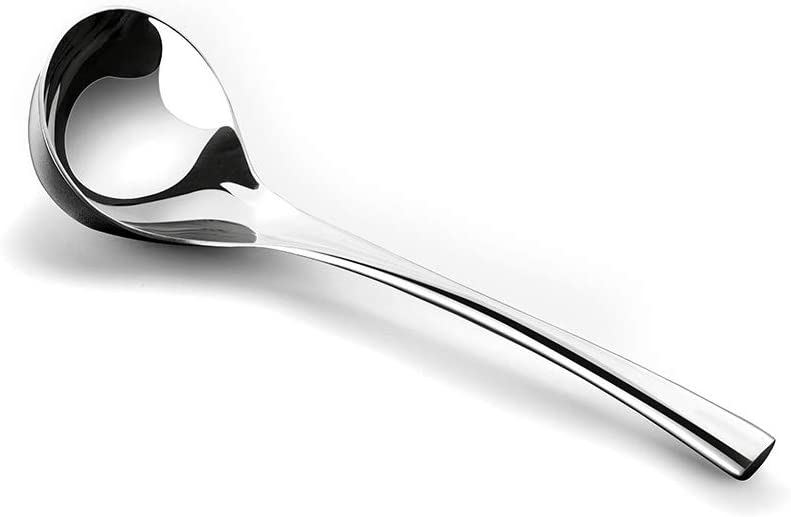
Ladle – For serving soups, stews, and pasta sauces. Look for stainless steel in a variety of sizes.
Image: Wenkoni Ladle
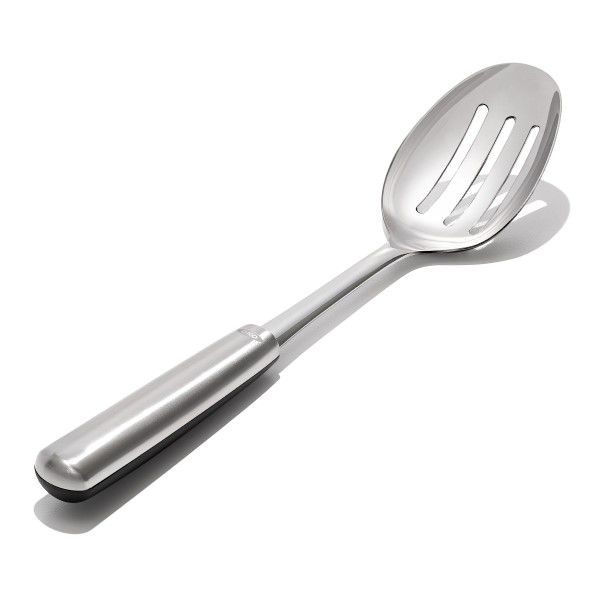
Slotted spoon – For scooping ingredients out of liquids or skimming foam. Stainless steel is a good choice. Best purchased in a matching set along with your spatula, ladle, and tongs.
Image: OXO Slotted Spoon
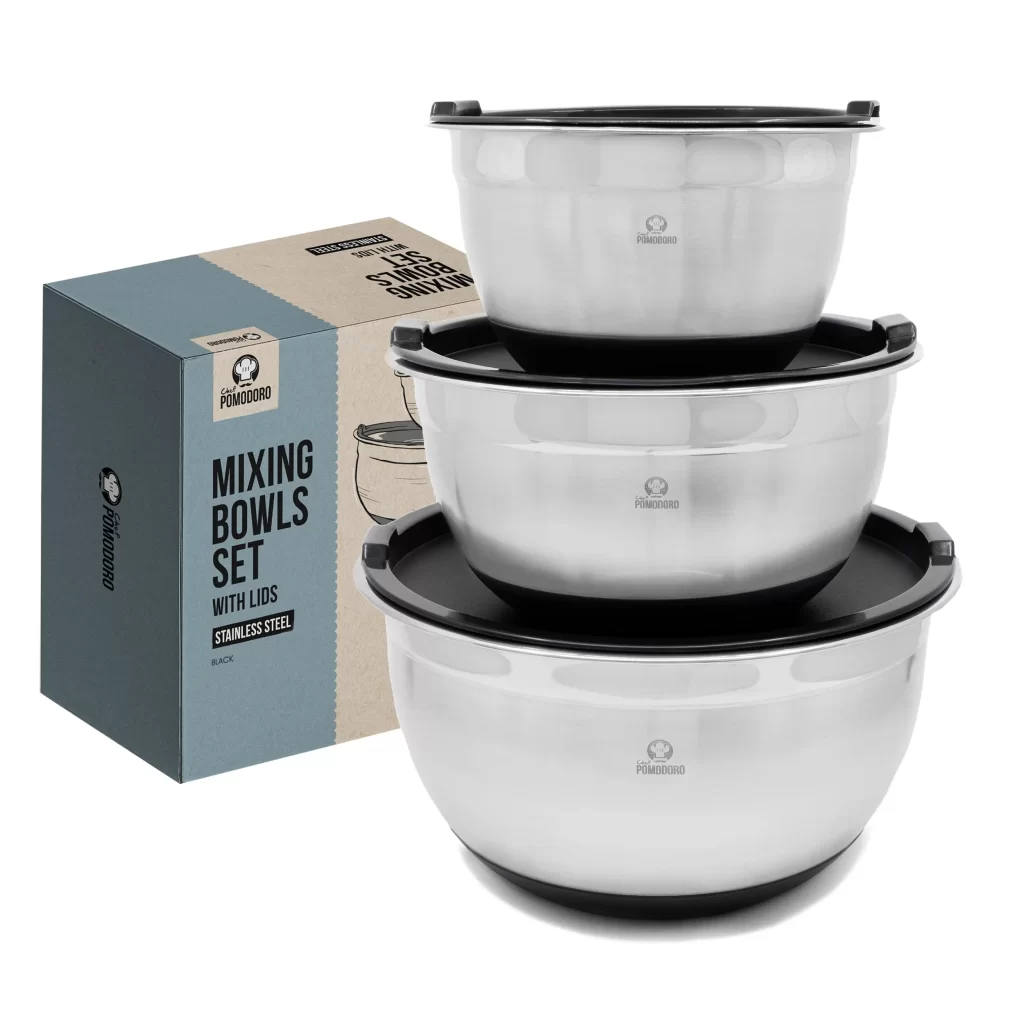
Mixing bowls – Get a set of stainless steel or glass bowls in different sizes for mixing ingredients.
Image: Chef Pomodoro Mixing Bowls with Lids
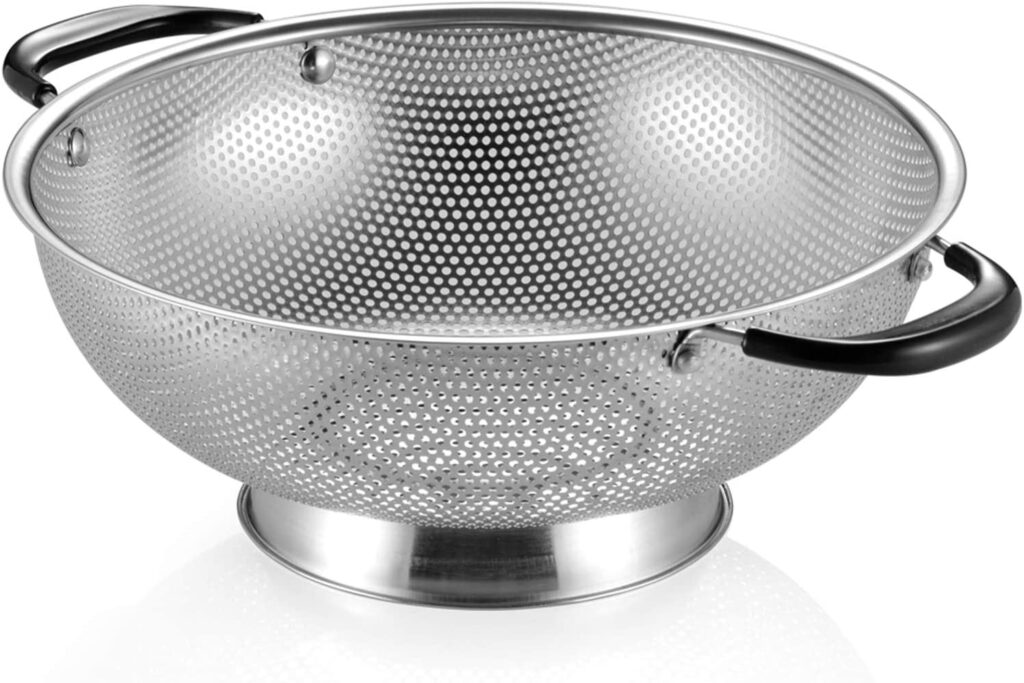
Colander – For draining pasta or rinsing vegetables and salad greens. Stainless steel or plastic.
Image: 18/8 Stainless Steel Colander
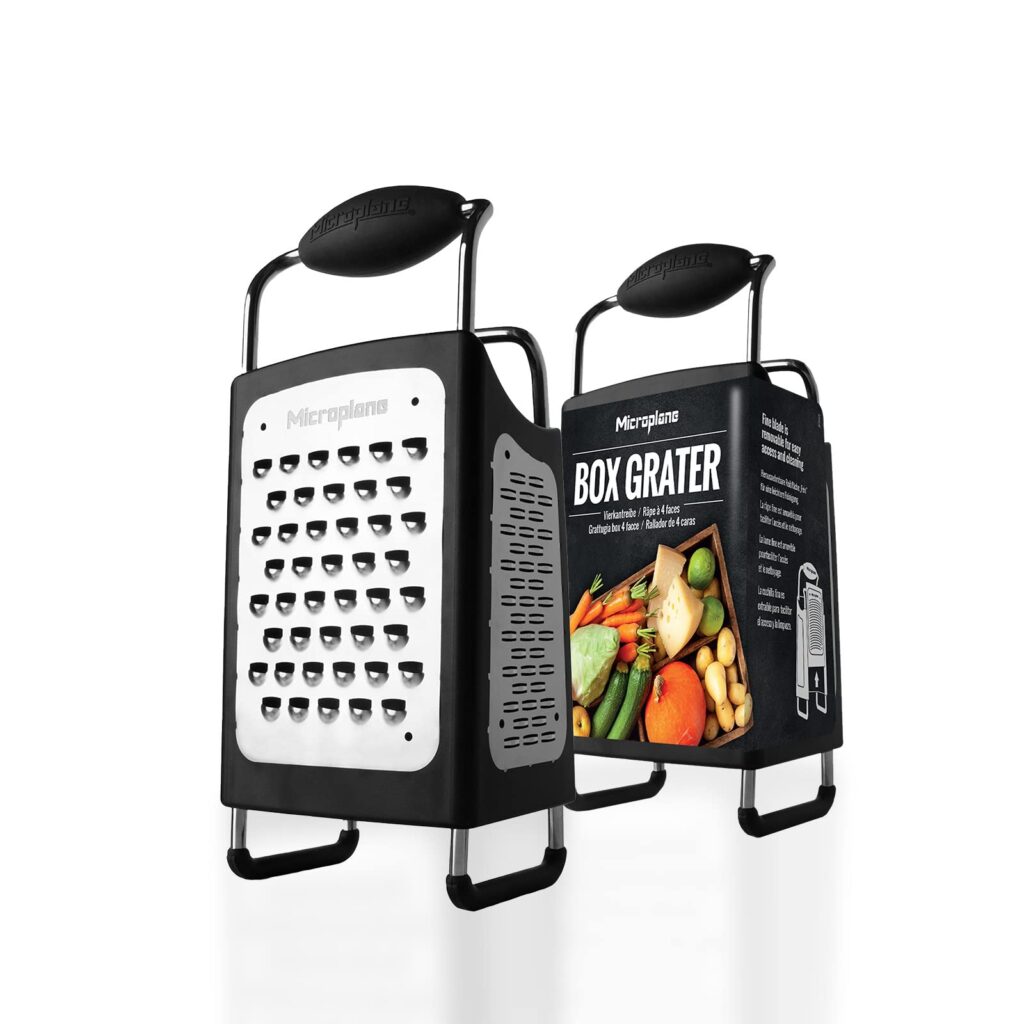
Grater – A four-sided box grater can grate cheeses, vegetables, nutmeg, nuts, vegetables, and more.
Image: Microplane Multi-Purpose Box Grater

Measuring cups (dry and liquid) – For accurately measuring ingredients. Stainless steel cups last a long time, and glass is great for liquids but we love the convenience of the one pictured by CWC.
Image: CWC 9pc Dry and Liquid Measuring set
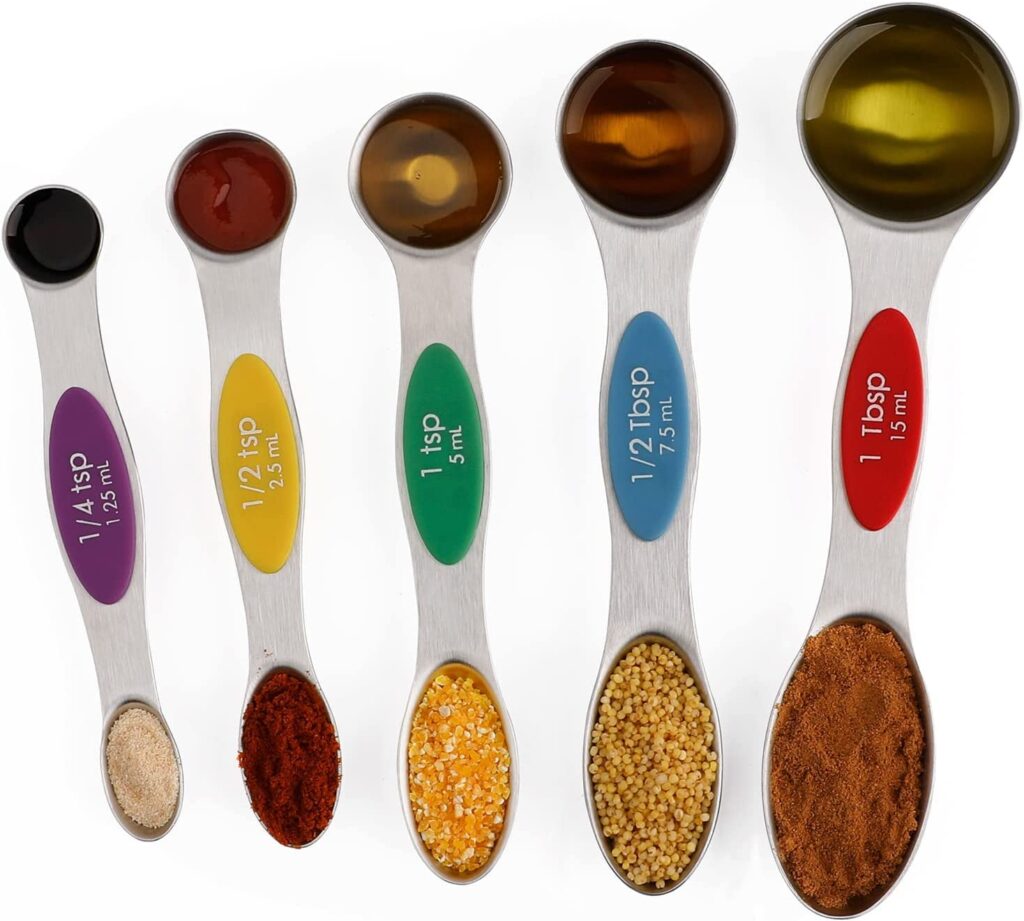
Measuring spoons – Look for a set with multiple sizes from 1/4 teaspoon up to 1 tablespoon.
Image: Forkmannie Dry and Liquid Magnetic Measuring Spoon set
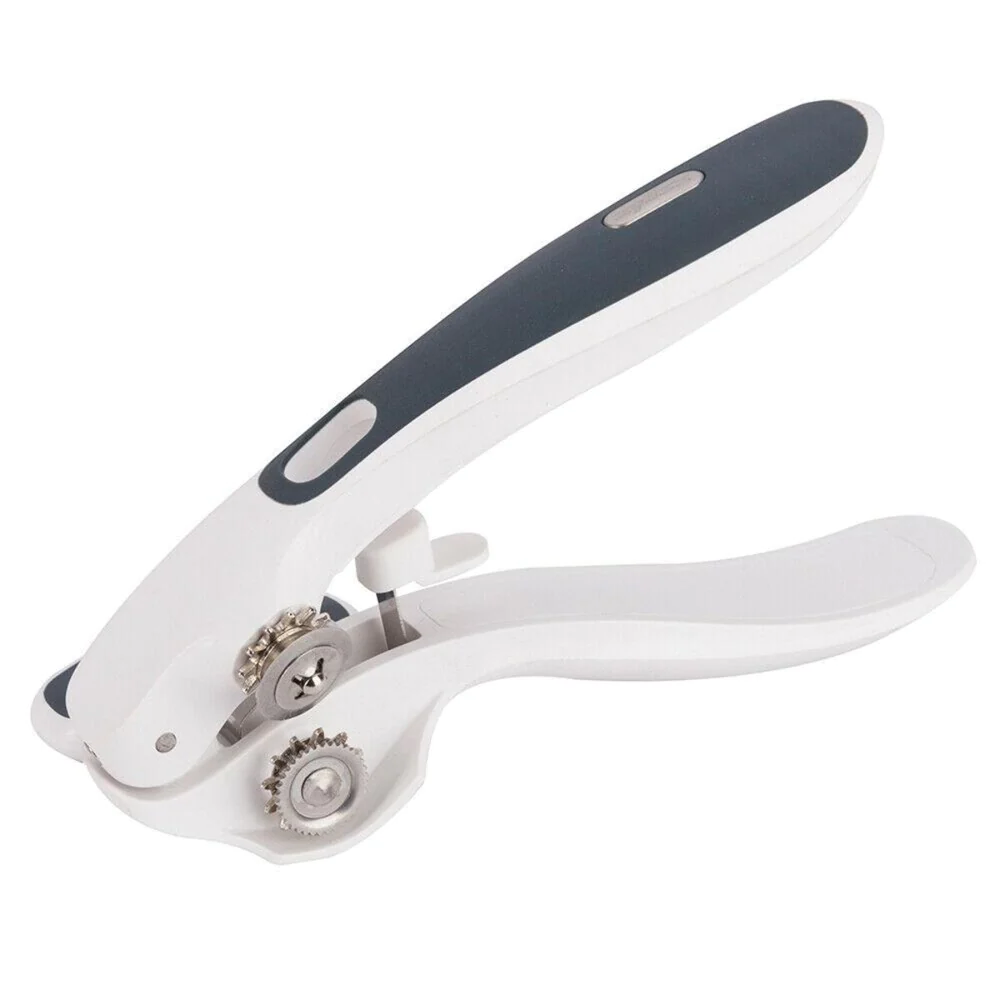
Can opener – Choose a manual or electric can opener depending on your needs. A good manual opener will last for years.
Image: Zyliss Lock & Lift Can Opener
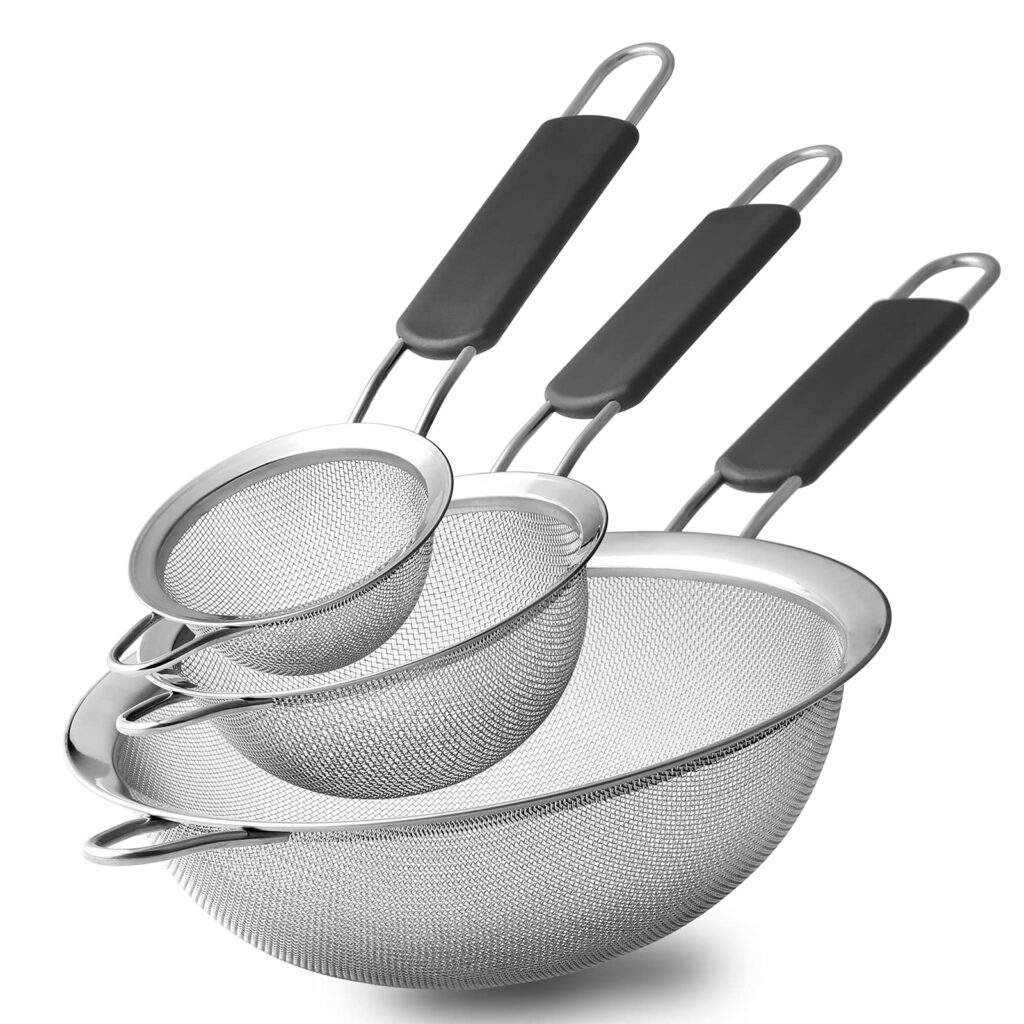
Strainer – For separating solids from liquids, sifting flour etc. Choose stainless steel and best purchased in a set with small to large sizes.
Image: Fancymay Stainless Steel Mesh Strainer
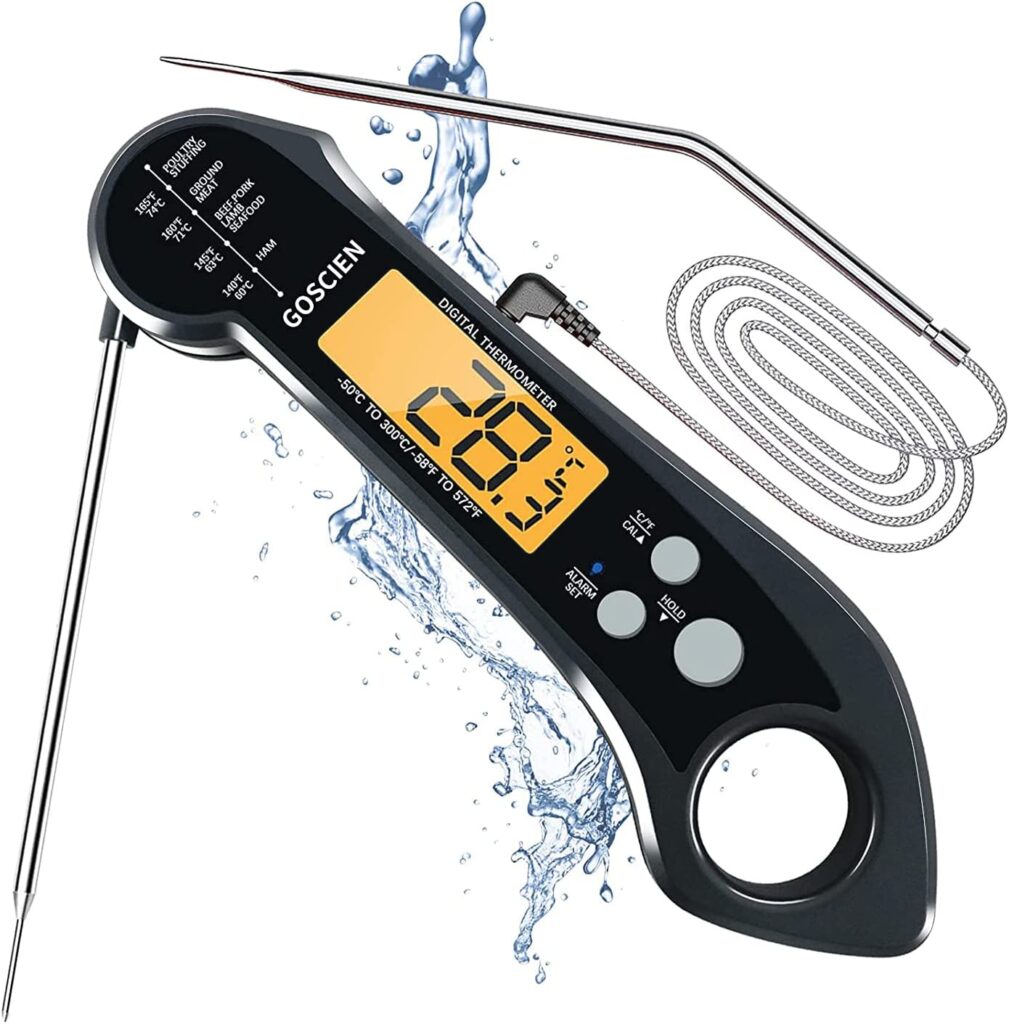
Instant Read Thermometer – for safely cooking meats and baking. Choose one that has a meat probe and an external extension probe for roasting/baking.
Image: GOSCIEN Instant read thermometer
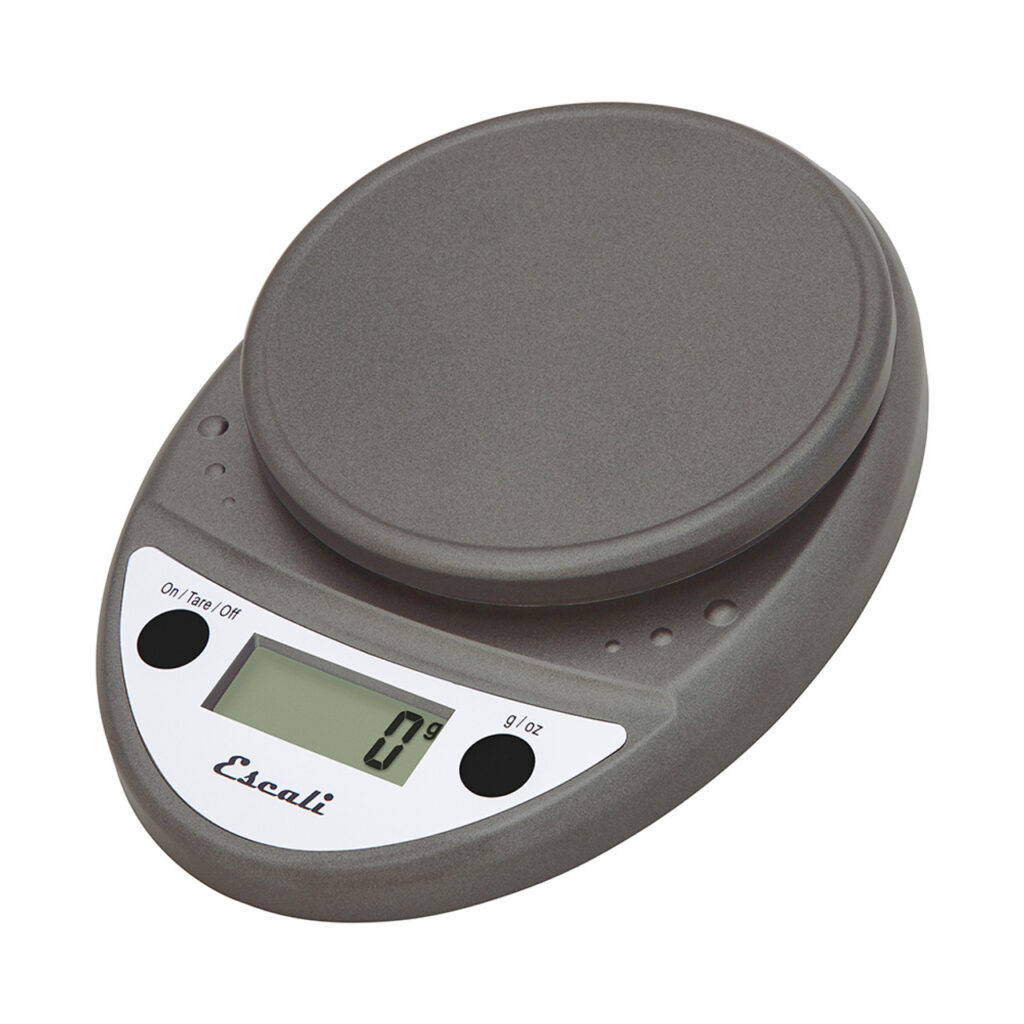
Digital Scales – For accurately measuring ingredients. Choose one that takes up minimal workspace and can switch between grams and ounces easily.
Image: Escali Primo Digital Kitchen Scale
Organizing and Storing Kitchen Utensils
Once you have the right kitchen utensils, it’s important to store them in a way that keeps them organized and accessible. An easy solution is to invest in an expandable utensil drawer organizer or caddy. These are usually made of plastic and come with adjustable dividers so you can customize them for your specific needs. This will help keep all of your essential tools within reach and make sure they don’t get lost among other items in drawers or cabinets.
If drawer space is limited, another great storage option is wall-mounted racks or hooks for hanging pots, pans, and other utensils on the walls of your kitchen. Not only does this free up valuable counter space but it also makes everything easy to find when needed because you can see exactly what’s there at a glance. Utensil holders are also great options if you don’t have much pantry space available; these fit easily on most counters and provide a handy spot for storing spatulas, whisks, and other frequently used tools without taking up too much room!
In addition to having adequate storage solutions, organizing tips can go a long way towards keeping things neat and tidy in the kitchen as well. For example: try grouping similar items like measuring cups together instead of having them scattered throughout different drawers; label containers so that you know where each item belongs; use clear bins/baskets so that everything inside is visible at a glance; designate separate areas for dishware versus cookware versus baking supplies etc., And lastly be sure not to overload any one shelf or cabinet with too many items – this will help ensure things stay neat even when actively cooking!
Cleaning and Maintaining Kitchen Utensils
Cleaning and maintaining kitchen utensils is an important part of keeping a healthy and sanitary kitchen. Before using any new utensil, it should be properly washed and disinfected to ensure that you are not introducing bacteria into your food. For most items, washing them with hot water and soap will suffice however for certain tools like wooden spoons or knives, it’s best to use specific cleaning products designed for their materials.
When cleaning kitchen utensils, always start by pre-soaking them in warm soapy water before scrubbing them with a brush or sponge. Rinse off the suds afterward and then completely dry the item before putting away; this helps prevent mildew from forming on metal surfaces which can lead to rusting over time. It’s also important to take extra care when washing non-stick pans as abrasive cleaners could scratch the surface which could cause flakes of Teflon coating to end up in your food!
In addition to regular washings after each use, it’s equally important to regularly clean all of your cooking surfaces including counters and cutting boards; these areas often come in contact with raw meat so they need special attention since bacteria can easily spread if left unchecked. Use a disinfectant cleaner specifically designed for these areas – don’t forget about those hard-to-reach spots either!
Finally, when storing your kitchen utensils make sure you keep metal items away from moisture as much as possible; this prevents them from becoming rusty over time which will shorten their lifespan significantly. You may want to consider investing in airtight containers that seal out humidity; these are great options for storing delicate tools such as whisks or zesters too! Following these simple tips will help ensure that your kitchen remains clean and organized at all times!
See here for more kitchen hygiene and cleaning tips.
Cooking Safety Tips
Safety guidelines when using kitchen utensils are important to follow in order to prevent accidents and injury while cooking. It’s imperative to keep knives sharp as this will help reduce the risk of slipping and cutting yourself or someone else. Always cut away from your body, use a chopping board for food preparation, and never leave knives unattended on counters or tables where small children can reach them.
When selecting kitchen tools such as whisks or mixers, it is important to choose ones with the appropriate size handles that fit comfortably in your hand; large handles are less likely to slip out of your grip which can cause burns if you’re not careful.
Common hazards to avoid in the kitchen include things like leaving hot pans on countertops without trivets underneath, having electrical cords dangling near wet surfaces (this could create an electrocution hazard), storing plastic containers too close to heat sources (melting containers release toxins into food) and wearing loose-fitting clothing while cooking (these items may catch fire).
Additionally, it’s important to always read package directions carefully before using any new product – these instructions provide valuable information about how best to use products safely and effectively. By following all safety guidelines and avoiding common hazards you can ensure a safe environment for everyone in the kitchen!
Conclusion
In conclusion, having the right kitchen utensils is essential for any home chef. From basic items like spatulas and whisks to more specialized tools, it’s important to have a full set of quality utensils on hand that you can rely on when needed.
Additionally, proper storage and organization are key for keeping things neat and tidy in the kitchen so make sure to invest in an appropriate solution that works best for your particular needs.
Last but not least always follow safety precautions when using these tools – from sharpening knives correctly to reading instructions carefully before use – this will help ensure everyone stays safe while cooking!
